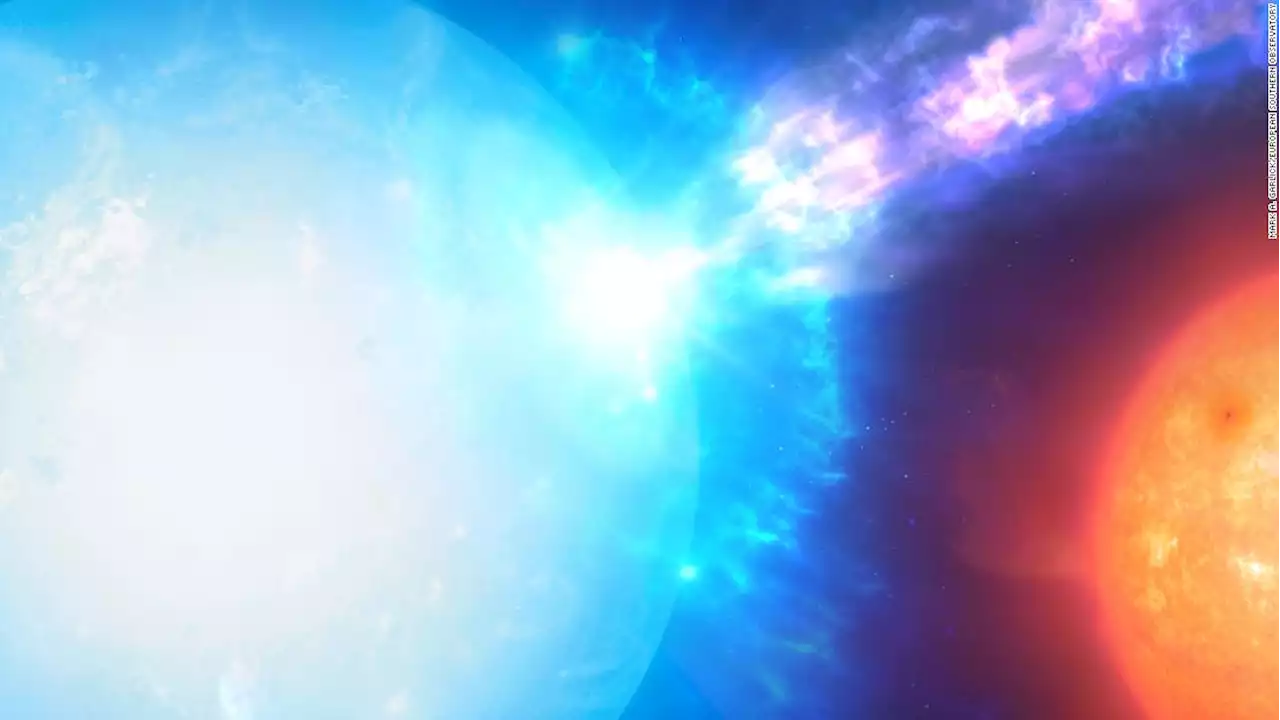Although it may be smaller than the giant supernova explosions that claim the lives of stars, this incendiary event still packs a punch.
Sign up for CNN's Wonder Theory science newsletter. Explore the universe with news on fascinating discoveries, scientific advancements and more. Astronomers have discovered a new kind of star explosion called a micronova.
Each micronova can burn through"around 3.5 billion Great Pyramids of Giza" of material in just a few hours, according to the researchers. These extremely powerful outbursts can occur on the surface of white dwarfs, or dead stars about as small as our planet, based on observations made by a team of astronomers using the European Southern Observatory's Very Large Telescope in Chile's Atacama Desert.
United States Latest News, United States Headlines
Similar News:You can also read news stories similar to this one that we have collected from other news sources.
 'Huge shift in travel policy': Travel mask mandate no longer in effect - CNN Video“A huge shift in travel policy when it comes to the pandemic.' CNN’s petemuntean reports on the White House saying that the CDC’s travel mask mandate is not in effect while under review.
'Huge shift in travel policy': Travel mask mandate no longer in effect - CNN Video“A huge shift in travel policy when it comes to the pandemic.' CNN’s petemuntean reports on the White House saying that the CDC’s travel mask mandate is not in effect while under review.
Read more »
 Dr. Sanjay Gupta reacts to 'abrupt' end of mask mandate for travelers - CNN VideoCNN's chief medical correspondent Dr. Sanjay Gupta discusses the ruling from a federal judge in Florida which resulted in several airlines and Amtrak lifting their mask mandates for travelers.
Dr. Sanjay Gupta reacts to 'abrupt' end of mask mandate for travelers - CNN VideoCNN's chief medical correspondent Dr. Sanjay Gupta discusses the ruling from a federal judge in Florida which resulted in several airlines and Amtrak lifting their mask mandates for travelers.
Read more »
 Jack Dorsey slams Brian Stelter, says CNN reporters ‘try to create conflict’Former Twitter CEO Jack Dorsey tangled with CNN personality Brian Stelter — criticizing the network and other prominent media outlets for stoking division in a lengthy tweetstorm Monday night…
Jack Dorsey slams Brian Stelter, says CNN reporters ‘try to create conflict’Former Twitter CEO Jack Dorsey tangled with CNN personality Brian Stelter — criticizing the network and other prominent media outlets for stoking division in a lengthy tweetstorm Monday night…
Read more »
 Hubble probes extreme weather on ultra-hot Jupiters -- ScienceDailyAstronomers have discovered bloated Jupiter-sized worlds that are so precariously close to their parent star they are being roasted at seething temperatures above 3,000 degrees Fahrenheit. That's hot enough to vaporize most metals, including titanium. They have the hottest planetary atmospheres ever seen. Hubble astronomers are reporting on bizarre weather conditions on these sizzling worlds. It's raining vaporized rock on one planet, and another one has its upper atmosphere getting hotter rather than cooler because it is being 'sunburned' by intense ultraviolet (UV) radiation from its star.
Hubble probes extreme weather on ultra-hot Jupiters -- ScienceDailyAstronomers have discovered bloated Jupiter-sized worlds that are so precariously close to their parent star they are being roasted at seething temperatures above 3,000 degrees Fahrenheit. That's hot enough to vaporize most metals, including titanium. They have the hottest planetary atmospheres ever seen. Hubble astronomers are reporting on bizarre weather conditions on these sizzling worlds. It's raining vaporized rock on one planet, and another one has its upper atmosphere getting hotter rather than cooler because it is being 'sunburned' by intense ultraviolet (UV) radiation from its star.
Read more »
